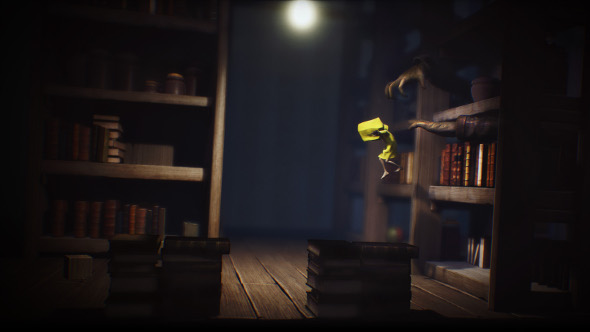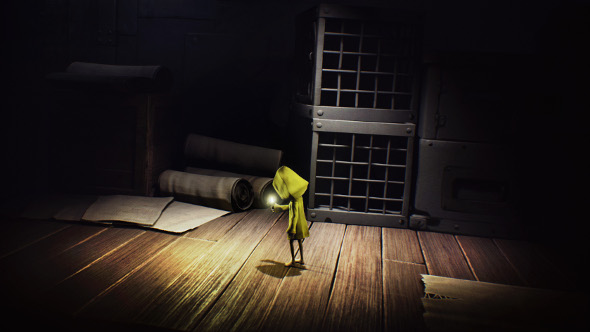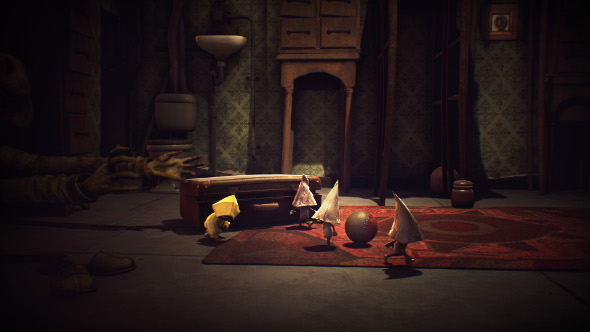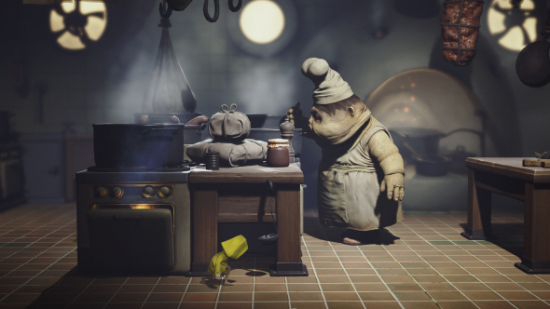What if your fears came to life? Tarsier Studios present their answer in the form of Little Nightmares, a chilling puzzle-platformer which follows the young Six as she scrambles to escape the mysterious facility known as The Maw. Armed with the knowledge that the greatest horror lies in the unknown, Tarsier have crafted an adventure light on detail but heavy on atmosphere.
Related: the best horror games on PC.
Sure to draw comparisons to recent hit Inside, the disturbing, oppressive world of Little Nightmares works its tendrils into you, leaving a mark lasting long after the credits have finished rolling. Thoroughly shaken and in search of answers to Little Nightmares’ many mysteries, we caught up with senior narrative designer Dave Mervik to talk Tim Burton, Inside and the game’s politics.
PCGamesN: What games did you grow up playing?
Dave Mervik: I started out playing games like Sphinx Adventure and Boxer on the Acorn Electron, but it wasn’t until the Sega Master System arrived that I completely lost it. Wonder Boy III was my first true love, and when the Mega Drive showed up, Flashback became my soulmate.
Reviews for Little Nightmares are very positive so far. How has the reaction to the game affected things at Tarsier?
Everyone has put so much time and effort into this game, so it’s really nice to read positive reactions to it, and it certainly created a nice buzz for our release party. Still, we’re more critical of our work than anyone else could ever be. All we tend to see are the flaws and the stuff we want to do better next time round.
So the young protagonist is called Six. Is there a significance to her name?
Yes.

Before the game released, a lot of people were comparing it to the work of Tim Burton. Having played it, I’m not sure if I agree. Do you think comparisons like that helped the game?
It’s nice to hear you say that, because I’m not sure I ever agreed! I can see how it can appear that way on the surface, but when you ‘get in there’, they’re very different beasts. Of course, we’re just a small independent studio from Sweden, so hearing your name in the same breath as Tim Burton’s is flattering if nothing else, but you don’t want people to go into the game with the wrong expectations – although, I guess it’s a good technique if you want to surprise them.
Little Nightmares has a haunting and beautiful soundtrack. Can you provide any insight into how it was composed?
Being a game that tells its story without dialogue, both the soundtrack and the audio design have shouldered a much greater responsibility to convey narrative elements to the player. To capture the dreamlike atmosphere of The Maw, Tobias Lilja sought to blur the line between musical elements and environmental sounds, using heavily-processed recordings of acoustic instruments such as music box, trombone, accordion and vocals, and blending them with sounds from the game world; such as distant bangs on a metal hull, boat horns, pots and pans, and metallic scrapes. Six’s presence within this surreal, industrial soundscape is represented by naivistic melodic motifs resembling children’s rhymes – but with a bleak and nauseating twist that hopefully captures the deeply unsettling mood of The Maw and its influence on the visitors.
It’s difficult to talk about a dark puzzle-platformer, particularly with a child protagonist, without mentioning Inside and Limbo. Obviously Little Nightmares is brilliant in its own right, but was its development influenced by Playdead’s success at all?
Only in the sense that we felt a little more emboldened to really go for it with this game, to trust our own instincts, and put out a game that showed people what we’re passionate about. That’s what I find most inspiring about Playdead, they have made great games while keeping their artistic integrity, and gamers have shown their appreciation.

Little Nightmares has some incredibly striking environment designs. With all these great concepts, and hints towards a larger world, are there any plans for another title set in the same universe?
In order to make The Maw and all of its insides fit together, we had to know all about the outside world too. That’s a big part of my job here, to figure out what kind of a world would give birth to a place like The Maw, and to then build that world into a coherent whole. So yes, there is a larger world outside, and one that we would love to explore in the future, but I guess we have to wait and see if people want it first.
It is undoubtedly a horror game, but it doesn’t lean on jump scares. Was relying instead on atmosphere a conscious decision?
Yeah, it was one of our earliest decisions in fact. We knew we didn’t want to go down that well-trodden path of gore and violence and jump scares – even though I’m easily one of the most jumpy people around. It felt more interesting to try to create this monstrous world with an oppressive atmosphere and drop a kid into the middle of it all. It creates a really cool dynamic I think.
In the final hour or so of the game, there seemed to be a political undercurrent. How much of that was intentional?
I’d be lying if I said it wasn’t something I’ve thought about, but that was very early on in the concepting process, and we didn’t really speak about it again. The reason being, you don’t want to fixate on any one thing too much, or it risks being the only thing you have to say, and it’s important to let all these things come through naturally. There are many ideas we’ve talked about during the development of the game, and this is just one of them. In the end, this is just a game about being trapped in a world run by grotesque monsters. If there are real-world parallels to be drawn, that’s something we should maybe try to fix.

How different was the experience of releasing a game that’s entirely your own?
It’s a bit more stressful, since you don’t have the comfort of knowing the canvas you’re working on, but at the same time, it’s been invigorating to set those parameters ourselves and to fill these new worlds with rich narrative details. This is true of both our games – Little Nightmares and our VR game, Statik. Both games are very different from one another on the surface, but both offer a somewhat interpretive experience, where the onus is on the player to figure out what’s going on, rather than just being able to watch an expository cutscene and remain a passive spectator. Those are the kind of creative decisions you get to make when you’re making your own thing, and for me personally, it’s been one of the most exciting things.
Was a shorter playtime something you aimed for?
I feel exhausted at the thought of starting a 60 hour-plus game, even if it’s the most amazing thing ever. From the start we were dead set against any kind of bloat or padding to just achieve a certain playtime. We never really put a number on the desired playtime, but rather wanted to make the game we wanted to make, tell the story we had to tell, and then finish when it was all done. Speaking as someone who has sat through 23 episodes of a TV show that only had 6 episodes of a story to tell, I’d much rather err on the side of brevity.
Will The City of Metronome ever see the light of day?
I love how that game is still remembered. It was the thing that brought me, and many others, to Tarsier, so for that alone, I’ll always love it. As to whether we’ll ever make it, who knows? We’ve no plans to, but we’ve no plans not to either. I suppose you never know what the future holds, and just the thought of making it excites me, but maybe it’s wiser to leave the past where it belongs.
Little Nightmares is out now on Steam and GOG. Here’s more on Six’s harrowing journey.
